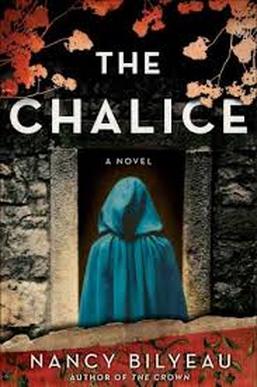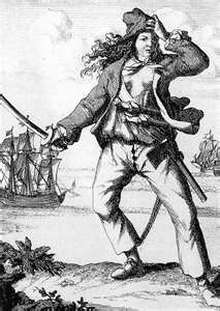 Lovely cover, don't you think? I'm delighted to be joined today by the talented Nancy Bilyeau, author of The Crown and The Chalice, historical thrillers set in Reformation England. From the official blurb: In 1538, England is in the midst of bloody power struggles between crown and cross that threaten to tear the country apart. Aristocrat-turned-novice Joanna Stafford has seen what lies inside the king's torture rooms and risks imprisonment again, when she is caught up in a shadowy international plot targeting the King. As the power plays turn vicious, Joanna understands she may have to assume her role in a prophecy foretold by three different seers, each more omniscient than the last. Joanna realizes the life of Henry VIII as well as the future of Christendom are in her hands—hands that must someday hold the chalice that lays at the center of these deadly prophecies… ********************************************************************************** "In the midst of England’s Reformation, a young novice will risk everything to defy the most powerful men of her era." **********************************************************************************
The other day, I came across a comment you'd made about The Chalice. “I wrote a novel set five centuries ago, in a country I don’t live in, about a religion I don’t practice.” So, tell us, what in the world inspired The Chalice? NB: Both The Crown and The Chalice come from my lifelong passion for English history, which defies all explanation. I know that the conventional wisdom in fiction is “Write what you know,” but I always love entering new worlds in my reading, far from my daily experience. There have been plenty of novels written about modern life in New York City and I am sure they’re quite good but I haven’t read them. I’d rather watch “Game of Thrones” than “Sex in the City.” The Chalice, set at a key moment in the English Reformation--in 1538--is a carefully researched novel. What was your favorite part of doing the research? Least favorite? NB: I have a sizable home library of nonfiction books on England, acquired at a steady clip since I was a teenager. I drew on that base of knowledge when coming up with the broad outline of the plot for The Crown and The Chalice. Then I would do deep dives into certain areas that I needed detail on: life in a priory of Dominican nuns; the mystery behind the missing body of Saint Thomas Becket at Canterbury; the menu of a dinner in an aristocratic household; travel by boat from England to Flanders. All sorts of things! I love finding the little details that I can use to make a scene come alive, such as what would be served as breakfast to Dominican friars in the 1530s. My least favorite is when I can’t find what I need and it’s delaying the writing. But I am stubborn; I keep going until I learn enough to help my story. Joanna Stafford—a former novice—is an unconventional heroine for any time period. Tell us about your thought process as you developed her character. NB: I wanted her to be genuinely pious but to be a real person too, with frailties and flaws, such as a quick temper. Strong but sometimes reckless. Intelligent but naïve. It was important to me that I create a dimensional person.
3 Comments
 Anne Bonny, pirate, defying convention Hearing all the talk about piracy recently makes me think of my own days as a pirate. No, I was no Mary Read or Anne Bonny, two eighteenth-century women who disguised themselves as men in order to serve on a pirate ship. (But seriously, how cool were they? For several years they plundered and stole with the best of them...although of course they were publicly tried as pirates--and for defying conventions for women). But in the 90s, I did pull a short stint aboard the Golden Hinde, the museum replica of Sir Francis Drake's ship that circumnavigated the globe, currently dry-docked in the Thames, near London Bridge.  Golden Hinde (with an "e"!) in London During the week, I was a tour guide--ahem, costumed educator--for tourists and school groups, while on the weekends we ran pirate parties and living histories. We dressed in sixteenth-century sailor garb, which is not as glamorous as you might think. (In fact, once when I was taking my 'tea break' outside the nearby ruins of Winchester palace, a tourist offered me half a sandwich. Yup, she thought I was homeless.) Despite being a certified landlubber, I learned about ratlines, scurvy, gun drills and barber surgery (so gross, but so cool), swabbing the deck (much less cool) and a little tiny bit of nautical stuff, like turning the capstan, moving the yardarm, and of course some random pirate ditties. I was even hoisted once along the yardarm by the master rigger, a nauseating experience that gave me nightmares for some time. I got to talk about weevils, "powder monkeys" (the boys who carried gun powder would sway with the listing ship, looking like monkeys) , and the origins of such phrases as "loose canons" (cannons had to be secured on gun deck), "batten down the hatches" (that one's literal still, right?), and "freeze the balls of a brass monkey." (The last not so naughty as you might think). The best part? We all had to take turns on ship watch, sleeping in Francis Drake's own captain's cabin, while St. Paul's Cathedral gleamed across the Thames. Easily one of the most gorgeous views in London. (The crew and I also spent a lot of time playing sardines among the barrels, and 'tippling down the hatch' but that's entirely another story.) For me, it was a bit of a lark, something wonderful to support me while I worked in London's archives. And Bankside--where the Golden Hinde and Shakespeare's Globe are located--came to feature prominently in Monster at the Gate. I always wondered, though, what it would have been like to have been a real pirate--to have run away from home; to have shunned tradition, convention and stereotypes. Although maybe a few days living among rats, weevils, sickness, and 70 other unwashed bodies might have cured me of that romantic impulse. (Not to mention I think I'm a bit adverse to violence and plundering). But what do you think? Could it have been the pirate life for you? |
Susanna CalkinsHistorian. Mystery writer. Researcher. Teacher. Occasional blogger. Categories
All
Archives
May 2023
|
 RSS Feed
RSS Feed